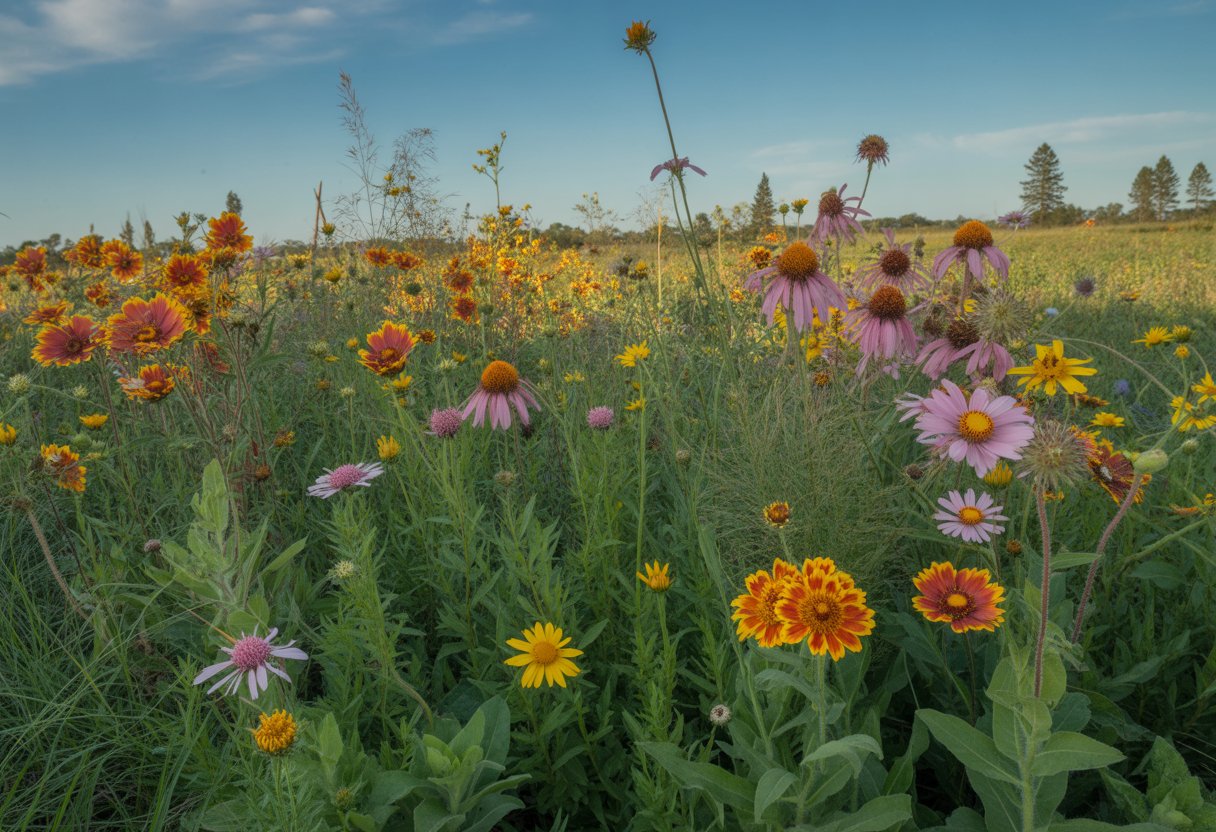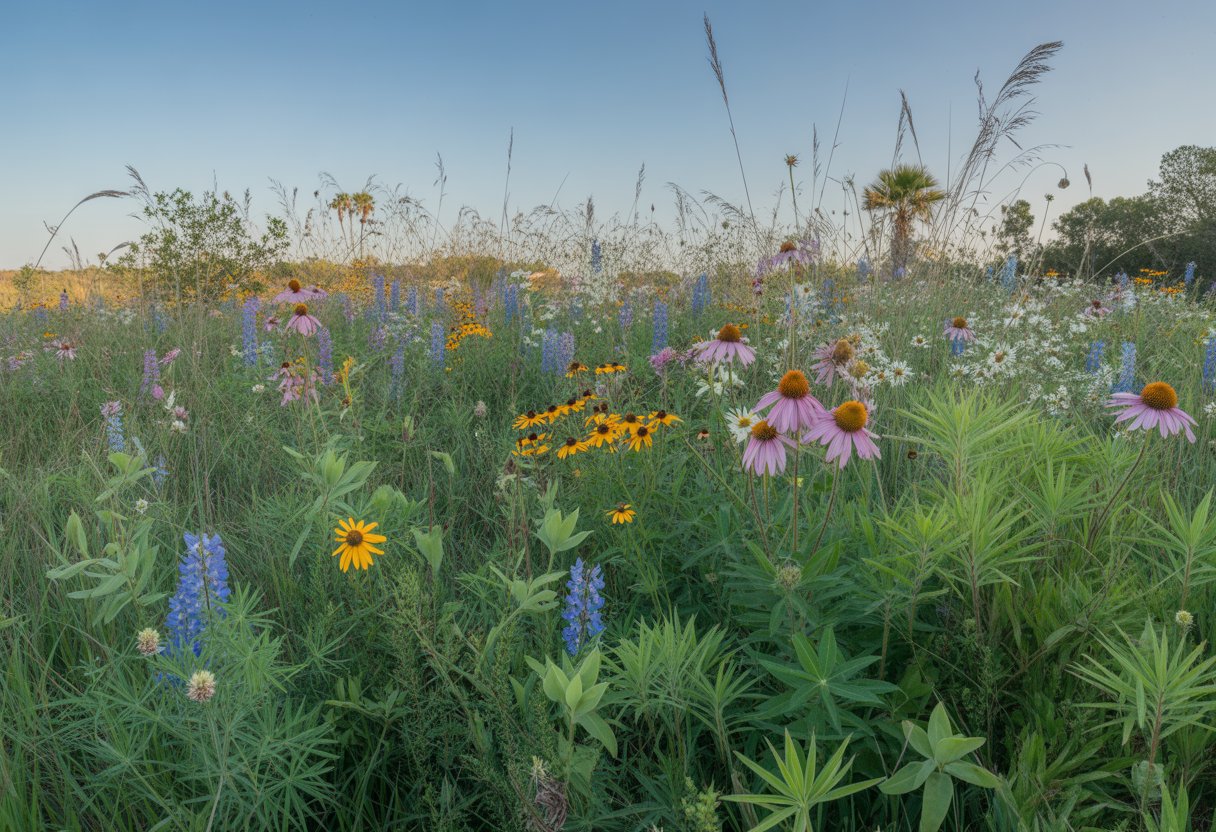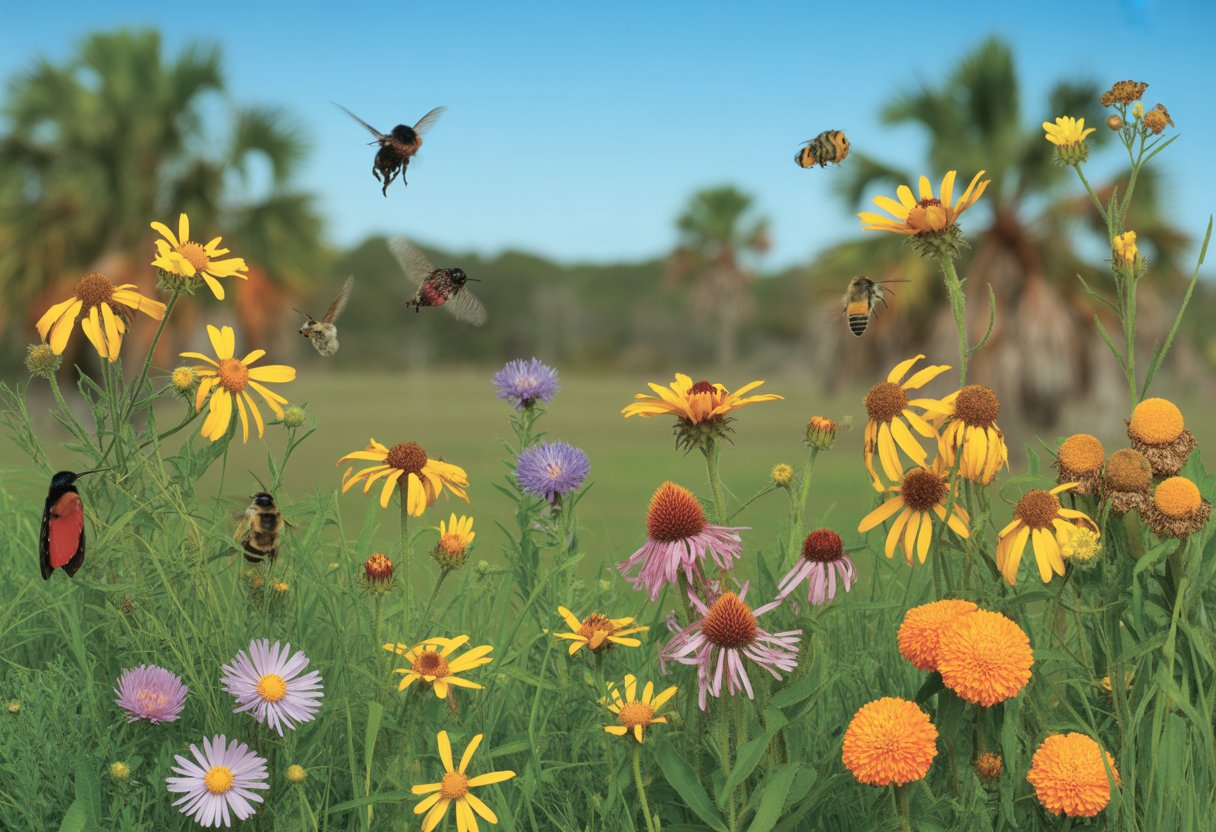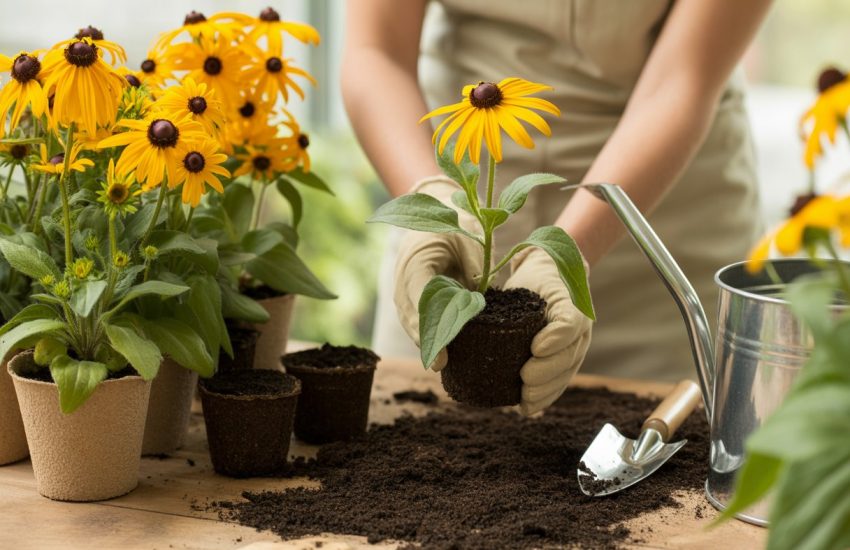Wildflower Meadow Planting Florida Guide for Year-Round Bloom and Native Growth
Planting a wildflower meadow in Florida means picking native species that actually handle the state’s crazy climate and sandy soil. Go for drought-tolerant, low-maintenance wildflowers—they’re the ones that really thrive in Florida’s heat.

You’ll want to think about Florida’s wet and dry seasons before planting. Most folks plant in early spring or late fall so seeds get a head start before the weather turns brutal.
Good site prep and a bit of ongoing care help seeds settle in and grow strong. Don’t skip these steps—they make all the difference.
Planning a Wildflower Meadow in Florida
If you want your wildflower meadow to thrive in Florida, you’ll need to pay attention to the site and what your plants need. Planning ahead supports native plants and helps with pollinator gardens.
Site Selection and Soil Preparation
Pick a spot with well-drained soil—wildflowers hate soggy feet. If you’re stuck with heavy clay or swampy ground, try amending the soil or building raised beds.
Test your soil to check pH and nutrients. Florida’s notorious for sandy, acidic soils, so sometimes you’ll need to mix in organic matter or lime.
Clear out weeds and grass first. Some people use weed barriers or even herbicides before planting to cut down on competition.
Designing for Sun, Shade, and Drainage
Most Florida wildflowers want full sun, at least six hours a day. Still, some natives can handle a bit of shade if you’ve got trees around.
Drainage can be all over the place in Florida. Low-lying spots that hold water work for wet-loving species, while higher ground suits drought-tolerant flowers.
Mixing sun and shade plants keeps your pollinator garden interesting. Pay attention to drainage—it’ll save you headaches later.
Choosing the Best Native Wildflowers and Grasses

Picking native wildflowers and grasses for a Florida meadow means thinking about bloom times, soil, and which critters you want to support. If you mix species that love your local conditions, you’ll get a tough, good-looking meadow all season.
Coreopsis: Florida’s State Wildflower
Coreopsis, especially Coreopsis leavenworthii, stands out for its sunny yellow blooms and long flowering stretch. It loves sandy soil and shrugs off Florida’s heat and dry spells.
Pollinators like bees and butterflies flock to its flowers, which is honestly great for the whole ecosystem. Coreopsis grows easily from seed and fills in bare patches fast.
It pairs nicely with coneflowers or black-eyed Susans—layers of color, low fuss. People keep coming back to it because it’s just that reliable.
Black-Eyed Susan, Gaillardia, and Blanketflower
Rudbeckia hirta (Black-Eyed Susan), Gaillardia pulchella (Indian Blanket), and Blanketflower bring bold color. Black-Eyed Susan’s yellow petals with dark centers add structure.
Gaillardia and Blanketflower throw in reds and oranges, making the whole scene pop. They all handle different soils and love the sun.
Butterflies and helpful bugs show up for these, too. Their bloom times overlap, so your meadow stays colorful from spring through late fall.
Adding Spotted Beebalm, Goldenrods, and Milkweed
Spotted Beebalm (Monarda punctata), goldenrods (Solidago spp.), and milkweed support pollinators, especially monarchs. Spotted Beebalm’s tubular flowers and spotted bracts attract hummingbirds and bees.
Goldenrods bloom late in summer, marking the season’s shift and hosting all sorts of insect larvae. Milkweed is a must for monarch caterpillars and likes well-drained spots.
Mixing these in boosts diversity and gives wildlife what they need.
Supporting Diversity With Native Grasses
Native bunch grasses like Schizachyrium scoparium (little bluestem) add structure and help control erosion. They make shelter for insects and small critters, plus add texture.
Their deep roots improve soil and hold moisture. These grasses handle Florida’s heat and dry spells, and they look great with wildflowers like coreopsis.
When you mix grasses and flowers, the meadow stays stable and healthy. Grasses can also outline paths or open spaces, which is just handy.
Wildflower Meadow Establishment and Care
Starting a wildflower meadow in Florida means picking the right seeds and using good sowing techniques. Watering, mulching, and letting wildflowers reseed naturally help them take off.
Choosing and Sowing Wildflower Seeds
Stick with native or adapted wildflower seeds—they handle Florida’s quirks best. If you mix species with different bloom times, you’ll get flowers all year.
Prep the soil by pulling up grass and weeds, then lightly till it so it’s fine and even. Scatter seeds over the top; don’t bury them deep since most need light to sprout.
Press the seeds in gently, but don’t cover them with more than a quarter inch of soil. Late fall or early spring is the sweet spot for sowing, before the heat and dry spells roll in.
Watering, Mulching, and Encouraging Reseeding
Water new seeds daily with a gentle spray to keep the topsoil moist—don’t drown them, though. Once they sprout, you can ease back but keep the soil damp while roots grow.
Spread a thin layer of straw or fine mulch to keep moisture in and soil temps steady. Skip heavy mulch, or seedlings might struggle to break through.
Let some wildflowers go to seed and drop naturally each year. In late winter, mow or rake lightly to help seeds touch the soil and come up next season.
Drought Tolerance and Ongoing Maintenance
Once they’re settled in, Florida wildflowers handle drought surprisingly well. During long dry stretches, give them a deep soak now and then—don’t overdo it or you’ll encourage shallow roots.
Pull out invasive plants at least once a year. After seeds drop, mow to keep woody plants from taking over.
Wildflower meadows don’t want a lot of fuss. Let them do their thing, and they’ll reward you.
Supporting Pollinators and Conservation Efforts

A thoughtfully planned wildflower meadow in Florida gives native pollinators food and shelter. Working with local groups helps you pick the right species and keeps conservation efforts moving forward.
Enhancing Meadows for Pollinators
Planting a mix of native wildflowers draws in bees, butterflies, and moths. Flowers like Coreopsis, Milkweed, and Black-eyed Susan keep nectar and pollen coming through the seasons.
Skip pesticides and herbicides near your meadow. Add shallow water dishes or leave some spots undisturbed—pollinators need places to nest, too.
Keep an eye on which pollinators visit. If you notice gaps, tweak your planting or care routine to make your meadow even more inviting. Isn’t that kind of the point, anyway?
Working With Florida Wildflower Foundation and Florida Native Plant Society
The Florida Wildflower Foundation shares a bunch of resources on native plant propagation and meadow design. They really zero in on seed lists with plants that actually do well in Florida’s different regions and keep pollinators happy.
The Florida Native Plant Society runs educational programs and offers volunteer gigs focused on restoring habitats and raising awareness. If you team up with them, you’ll get solid advice from people who know their stuff, plus a whole community to back you up on conservation projects.
Both groups publish research and best practice guides to help landowners create wildflower meadows that last. They’re all about boosting native biodiversity and making Florida’s ecosystems a little tougher.

